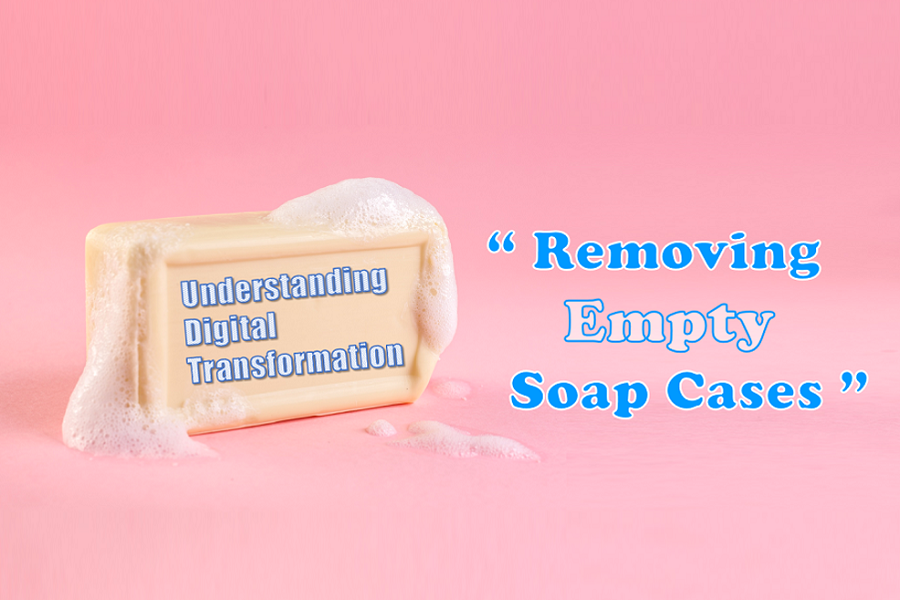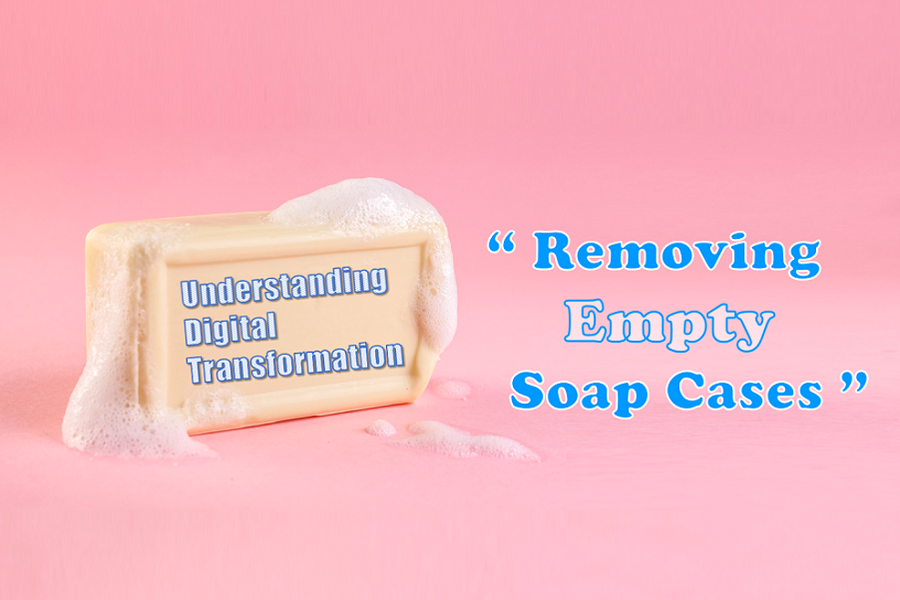
At a soap factory in the U.S., empty soap cases were often shipped out as final products due to the malfunctioning of packaging machine. To address this problem, the factory paid 100 thousand dollars to receive consulting services on the matter, and the solution presented by the consultants was to use a 500-thousand-dollar x-ray scanner to sort out the empty cases. In the midst of contemplating whether to go with the solution and ways to reduce the cost, the executives received a call saying that the problem had been solved. It turned out that a new employee who just joined the company brought a 50-dollar fan from his house and used it to blow away the empty cases!
From time to time, we fail to capture the essence of the problem while simply following the trend. The consultants set focus on figuring out whether a soap case was empty and accordingly suggested using an x-ray scanner. On the other hand, the new employee thought that the key was to remove the empty cases and gave little importance to finding out what’s inside.

This is a story that well explains the need to choose and develop the tools fit for purpose. However, while looking at the recent spread and application of digital transformation, I realized that attention should be given on the expandability of the fan serving as the empty case removal system, and that the company atmosphere and culture driven by such success stories were also important. Let’s go further into the story.
The new employee who brought the fan received a promotion right away and continued to find simple but effective solutions. Other employees motivated by this also began to propose ideas and some even led to giving tangible results. Before long, such an atmosphere settled as a corporate culture. Countless reports on new ideas and their effects were presented, but actual sales and product quality stayed the same. What was worse was that all kinds of miscellaneous things created with various new ideas started to become a hindrance to the operation of the soap production line.
Then, a new problem occurred. As the quality of soap began to have an increasing influence on sales due to the heightened expectations of consumers, a new category of defective products emerged. Improper shape or weight of the soap started to become an issue, but this could not be addressed with a fan. However, in the case of a competitor company that had chosen to use an x-ray scanner from the beginning, it turned out that the company additionally installed an electric scale that checks the weight of the soap and was capable of detecting foreign substances mixed within the soap by using the enhanced functions of its x-ray scanner.

There is another similar story. It is a story of a hotel that was often quoted during the days when the importance of Customer Relationship Management (CRM) was emphasized. One day, a CEO who considered to adopt an expensive CRM system checked into one hotel. A front-desk employee, recognizing the CEO, thanked him for once again visiting the hotel. Being fascinated by the excellent customer management, the CEO asked which CRM system the hotel used, and the employee gave an unexpected response, saying that the driver of the taxi that the CEO had just taken provided the information. As it turned out, the taxi driver received a 10-dollar tip for handing over the information he got from having a casual conversation with the CEO on their way to the hotel. So what would have cost billions was taken care of with just a 10-dollar tip.
But unfortunately, this “taxi driver” CRM system will not work well nowadays. It’s because rather than talking to the driver, people these days deliver their destination information through apps which also calculate the fare automatically, and even more so because people are refraining from talking in confined spaces due to COVID-19. Moreover, the information from the driver may not be accurate since passengers may not tell the truth and the driver may not remember everything precisely. In today’s world, data is what provides us with useful customer information.
As seen in the above cases, the fan system for removing empty cases and the taxi driver CRM system were nothing but stop-gap measures. That is why the role of a leader is important. If a leader excessively praises a temporary measure while putting back the introduction of new technologies, there will only be a handful of makeshift solutions to use within a company. Leaders should of course clearly understand the essence of the problem, but they should also actively pursue the adoption of new technologies. It is the role of a leader to think over whether a simple solution that solved an issue will continue to be effective after several years and make balanced decisions.

In the case of Netflix, which has become increasingly popular due to COVID-19, the company differentiated its business by delivering DVDs via mail in its initial stage of growth. Since it was too expensive to offer only newly-released movies, Netflix also included classic movies that were relatively less popular and created a catalogue introducing the movies so that its customers would have interest in a variety of movies. This strategy enabled Netflix to achieve growth in the beginning, but if it were maintained to this day, the Netflix we know today wouldn’t have existed.
These days, Netflix actively uses AI and Big Data to recommend movies based on each user’s preference (hyper-personalization technology) and allows users to watch contents of their choice anytime and anywhere they want through the Internet and streaming technology. But now, Netflix is faced with a new challenge as the increase of its subscribers has decelerated. And Disney, with its merger of Pixar, Marvel Studios and Lucasfilm, stopped providing its contents to Netflix, which led to reducing the scope of movies available at the Netflix platform. This is presumably why Netflix is currently obsessed with producing original contents.
Amid such a profound change, it is all the more difficult to figure out how to accept and sustain digital transformation. And that is why some companies walk down the path of success while others head towards failure. In times of great transition like today, the past cannot offer any guideline for the future. Therefore, it would be necessary to stay open to various kinds of possibilities while seeking the right path by asking wise questions.
Even if we find an efficient solution, we should continuously look for a better one while keeping an eye on the changing trends and technologies. This article explained about how companies should accept digital transformation. In the following article, I will talk about the key technologies of digital transformation including AI, Big Data and cloud.
- Knox Native & E-Fota: Powerful extensions for your Enterprise Mobility Management
- How to Choose the Best EMM Solution
- Digital Government Innovation, Preparing for Hyperscale AI and Cloud
- How to automate factory and warehouse intralogistics to improve efficiency and productivity.
- INTRODUCINGDIGITAL MARKETING SERVICES
- Interview with Moritz: Enterprise Mobility Management [On-Premise]
